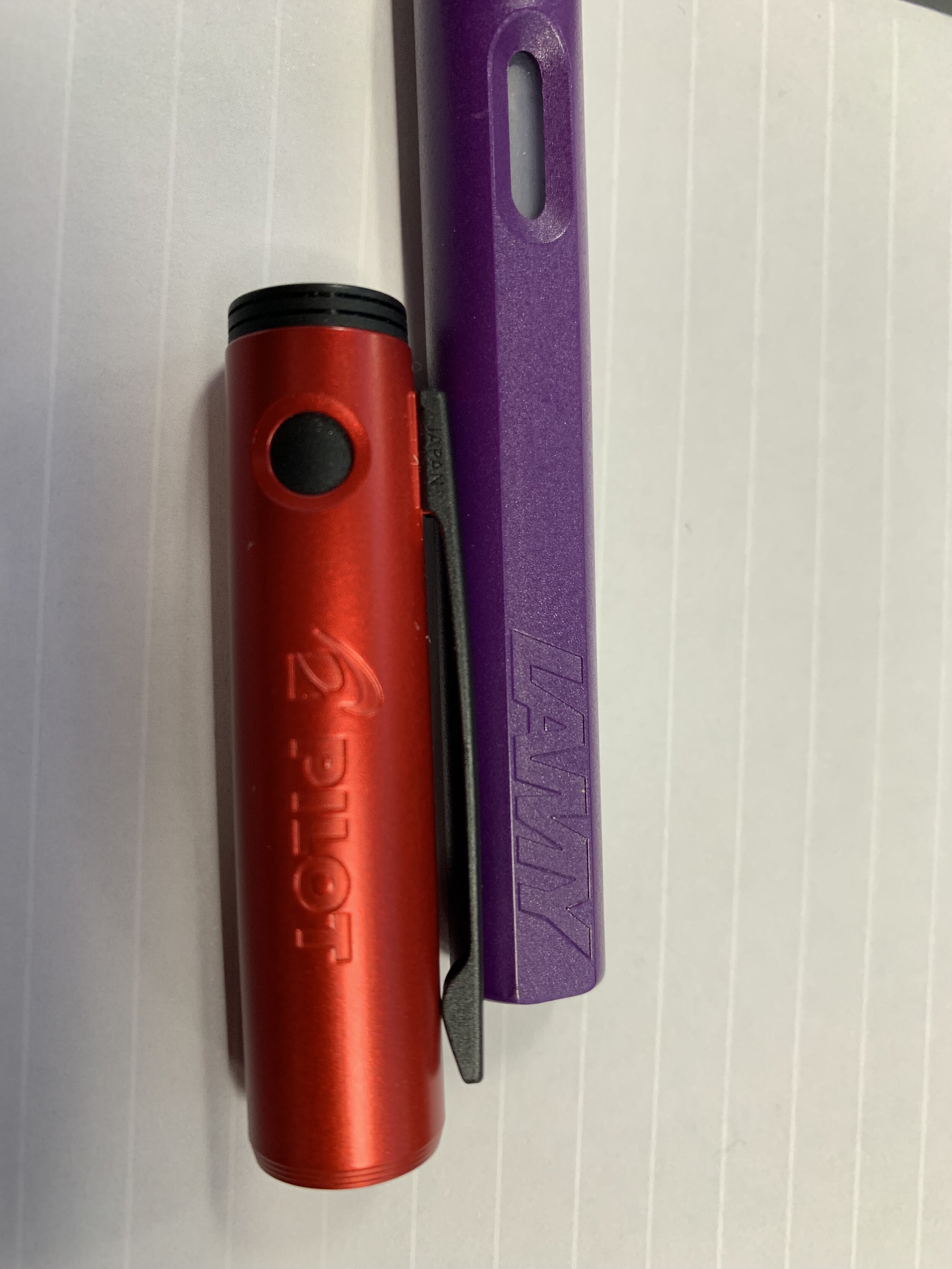How do the Pilot Explorer and Lamy Safari compare?
You'd be forgiven for missing the launch of the Pilot Explorer fountain pen in late 2018, or for noticing but not really paying attention. The 2018 Explorer was the victim of unfortunate timing, being announced amid, but seperate to, a Pilot 100th Anniversary celebration that some found to be lackluster, and repurposing the name of a beloved rollerball of yesteryear, without paying it any homage through design notes or otherwise. The fact that the similarly market-positioned Pilot Metropolitan had an MSRP increase announced around the same time did not help either. But the Explorer quickly caught my eye, in part because, on looks alone, it looked to me like it could be the Pilot equivalent of the Lamy Safari. As a believer that competition breeds excellence when it comes to consumer goods, I couldn't wait to compare the two pens, and see for myself.
In the interest of full disclosure, let me share before we go on that I never wrote with the stock nib that my Pilot Explorer arrived with. While Pilot Pen US' official stance on nib swapping is that it is a non-recommended modification of the pen (due in part to the fact that with Pilot pens it requires removing and handling the feed), my personal comfort level with is high enough that the moment I got my Pilot Explorer home I pulled the nib and replaced it with an Italic Medium (and later Italic Fine) nib that I salvaged from a Plumix Enso set. I also installed a Con-70 converter in the pen right away (Pilot doesn’t advertise this compatiblity, but when I picked my Explorer up locally at Pen Boutique, in Columbia, MD, the salesperson was kind enough to test the higher capacity converter inside of the pen for me. The moment that I felt the section and body screw together fully without any resistance from the button in the bottom of the converter, I was sold. The converter is, of course, a separate expense, but one that I personally recommend.) I then got out my Dark Lilac Safari, onto which I had swapped an Oblique Medium 14k nib, and started comparing. Because neither of these pens are "as they come" from the manufacturer I don't think it's fair to compare writing performance, but I will say that I was equally satisfied with each. Whether I was putting down Lamy Dark Lilac ink or Pilot Iroshizuku Yama-budo, it was all just different pretty shades of purple.
Side by side, my eye for similarity proved right. By no means is the Pilot Explorer a copy of the Lamy Safari, of course (it actually seems to take design cues from the Pilot Precise, as far as the divots in the cap and the fact that you can see through the section.) But there is no denying the similarities of the two colorful plastic flat-top pens. It's almost easier to define them by their differences. The Safari has Lamy's brand name imprinted on its barrel whereas the Explorer has Pilot's brand name imprinted on its cap. The Explorer is an all plastic design, featuring a single bar plastic clip, whereas the Safari has the iconic metal (or in this case coated metal) loop clip. The Safari features a color-matched ergonomic grip section, which guides your fingers to a "proper" grip, whereas all colors of Explorer feature a smokey translucent grip section, similar to the Lamy Al-Star or Pilot Kakuno. Unlike those two pens, there is no grip guidance to the section of the Explorer, but rather it is perfectly round. The Explorer also lacks any sort of cut-outs in the barrel. This means you must unscrew the section to check your in level, but also thatthe explorer may possibly be a candidate for eyedroppering (the barrel bottom is made of a seperate piece of black plastic, so it may still be necessary to seal up potential holes in the seam between both pieces of plastic. Eyedropper at you own risk.) All of these features come down to matters of personal taste. The one are where the Explorer clearly falls behind the Safari, though, is the fact that the Explorer plastic is only colored on the exterior, and the pen is otherwise white underneath. A few months of tossing around and carrying loosely with other pens has not yet worn the color on my Explorer down enough to see the white underneath, but I worry it is only a matter of time, and hope that Pilot uses colored plastic for this pen in future revisions.
All in all, the Pilot Explorer is a welcome addition to the world of $20~$30 fountain pens, suitable both as an entry level pen and as a pen to fill out your collection in order to allow you to carry more inks at once without breaking the bank. If you find the Metropolitan too heavy, or don't like the ergonomic grip on the Safari, then this might be the right pen for you. If you'd like to support our blog, you can purchase the pen in any of it's six colors and two nib sizes (Medium and Fine) by clicking this Amazon link. Please enjoy some additional comparison pictures below.









